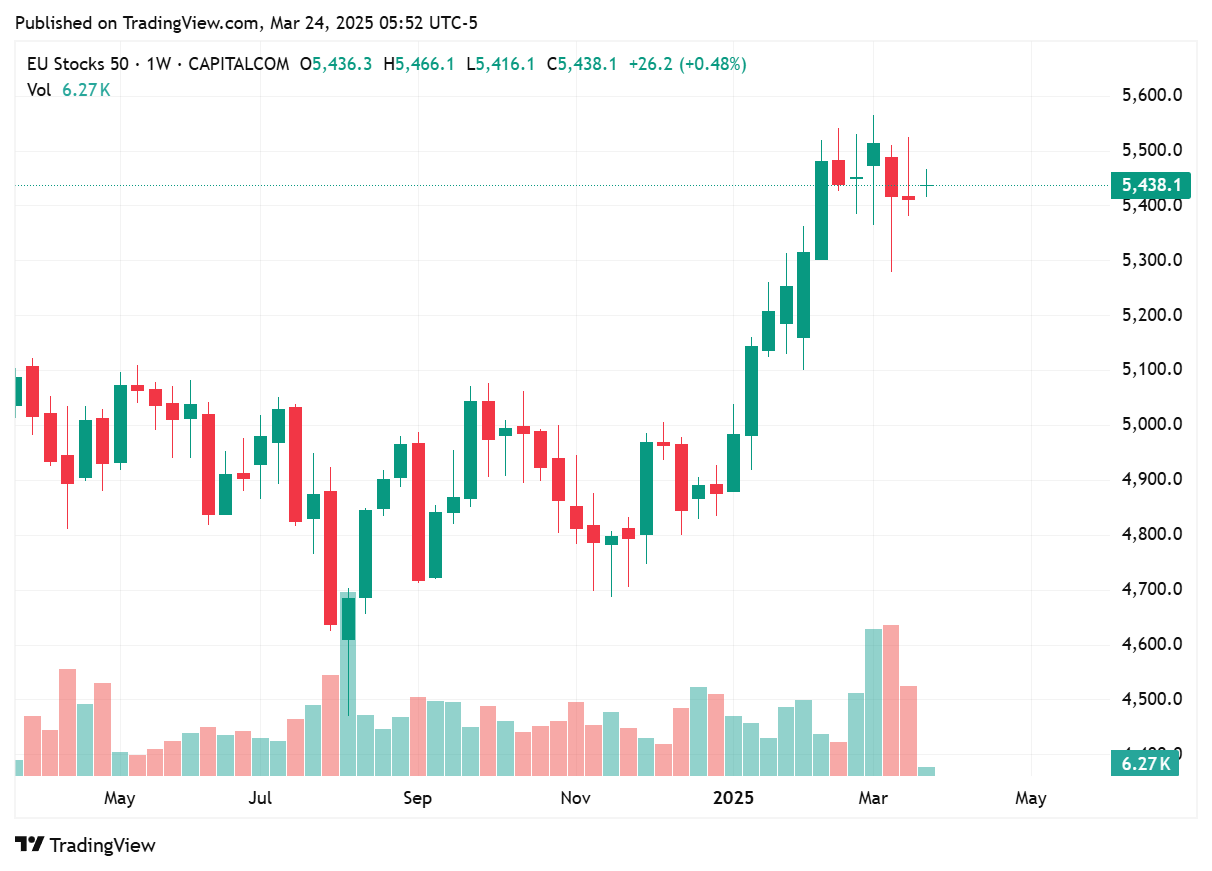Week 12 (March 17-23, 2025)
Good morning.
Here are the important economic events from last week:
Federal Reserve Decision: The Federal Reserve left the federal funds rate unchanged and maintained its forecast of two interest rate cuts this year.
Industrial Production: U.S. industrial production rose by 0.7% in February, exceeding expectations of a 0.3% increase. Manufacturing output, which represents the majority of industrial production, increased by 0.9%, beating forecasts for a 0.3% rise.
Stock Market Performance:
Dow Jones Industrial Average: Up 1.2% for the week
S&P 500 Index: Up 0.5% for the week
NASDAQ: Up 0.2% for the week
U.S. stock indexes alternated between modest daily gains and losses and ended up slightly higher overall in the wake of recent losses that sent the S&P 500 into correction territory the previous week. At Friday’s close, that index finished up 0.5% for the week and snapped a string of four weekly declines in a row.
Bond Market: The 10-year Treasury Yield decreased by 0.1% to 4.25%.
Oil Prices: Oil prices increased by 1.7% to $68.30 per barrel.
Crypto:
The cryptocurrency market sentiment is showing signs of cautious optimism. The Bitcoin Fear and Greed Index, a key indicator of market sentiment, is currently at 32, which falls in the "Fear" category. This suggests that investors are still somewhat apprehensive, but the market is not in a state of extreme fear.
Bitcoin traded above $84,000 on Monday, March 17, but later experienced downward pressure. By the end of the week, it was trading at $82,852.8, down 1.68% over 24 hours.
REX Shares launched BMAX, the first Bitcoin Corporate Treasury Convertible Bond ETF, offering exposure to convertible bonds from firms holding BTC.
Manufacturing Sector: Data reflected a recovery in manufacturing, which is expected to provide broader support for the economy and labor market.
These events indicate a mixed economic picture, with some positive signs in manufacturing, while the Federal Reserve maintains a cautious stance on interest rates.
CHINA DEVELOPMENT FORUM
The China Development Forum (CDF) 2025, held from March 23 to 24 in Beijing, focused on the theme "Unleashing Development Momentum for Stable Growth of the Global Economy." This annual event brought together global business leaders, policymakers, and academics to discuss economic collaboration and innovation. Over 720 participants, including executives from 86 multinational corporations (e.g., Apple, BMW, Siemens), government officials, and international organizations like the World Bank, attended the forum. U.S. companies led with 27 firms represented.
EUROPEAN DOMINANCE
European stocks have been outperforming their global counterparts since the beginning of 2025. The Euro Area Stock Market Index (EU50) has increased by 10.55% year-to-date, reaching an all-time high of 5,568.65 in March 2025. This strong performance is reflected in other European indices as well, with the Stoxx 600 gaining 0.78% in a recent trading session, coming off its worst week of the year.
OECD REPORT
The OECD released its Global Debt Report 2025 on March 20, 2025, highlighting significant concerns about rising sovereign debt levels worldwide. Key findings from the report include:
Record-breaking sovereign borrowing: Government bond issuance in OECD countries is projected to reach an unprecedented $17 trillion in 2025, up from $14 trillion in 2023.
Increasing debt-to-GDP ratio: The aggregate central government marketable debt-to-GDP ratio in OECD countries is expected to reach 85% in 2025, which is more than 10 percentage points higher than in 2019 and nearly double the 2007 level.
Rising interest payments: Government interest payments increased as a share of GDP in about two-thirds of OECD countries in 2024, reaching 3.3% of GDP, which now exceeds government expenditure on defense.
Emerging market debt growth: Sovereign borrowing from debt markets in emerging markets and developing economies has grown significantly, from around $1 trillion in 2007 to over $3 trillion in 2024, with China accounting for 45% of total issuance in 2024.
U.S. Retail Setback
Despite earlier optimistic projections, the U.S. retail industry is facing significant setbacks in 2025:
Store Closures: An estimated 15,000 stores are expected to close in 2025, more than double the 7,325 closures in 2024. This trend is outpacing new store openings, which are projected to decrease from 5,970 to 5,800.
Slow Sales Growth: Retail sales growth has slowed considerably. In February 2025, sales increased by only 0.2% month-over-month, falling short of the forecasted 0.6% rise. This follows a 1.2% decline in January 2025.



